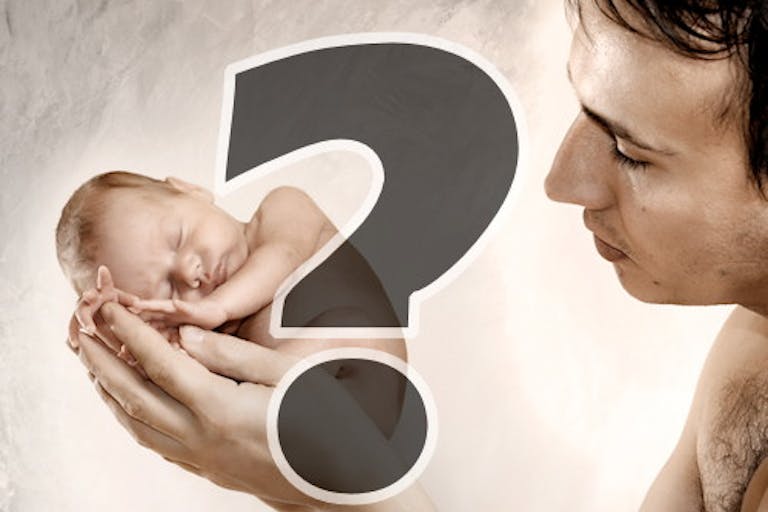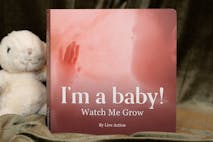
Vietnamese Catholics widen support for pregnant mothers
Angeline Tan
·
Abortion, infants, and the Moorean shift
The Moorean shift is named after the philosopher G.E. Moore. In his essays, “A Defence of Common Sense” (yes, “defence”!) and “Proof of an External World,” Moore provides a fascinating response against the external world skeptic – a skeptic who thinks that we don’t know that the mind-independent world exists. I intend to apply this response against particular theories of personhood that play a major role in the abortion debate. To explain Moore’s response in the context of skepticism, I have to get a little technical. Forgive me.
Let “P” be the proposition “the skeptic’s methods are correct.” Let “Q” be the proposition “I do not know that I have a hand.” Now, consider this logically valid argument (call it “the Skeptical Argument”):
P.
If P, then Q.
————–
3. Therefore, Q.
This is a (modus ponens) syllogism. A syllogism is an argument that contains two premises (1 and 2 above are the premises) and a conclusion (3 above). The premises function as the support or the evidence for the conclusion. Spelled out, the argument reads:
The skeptic’s methods are correct.
If the skeptic’s methods are correct, then I do not know that I have a hand.
————–
3. Therefore, I do not know that I have a hand.
With that in mind, the Moorean shift works as such: first negate the conclusion (3 above) and make it a premise. Then, negate – at least in this case – the first premise and make it a conclusion. Now, you should have the following (modus tollens) syllogism (call it “the Moorean Argument”):
Not-Q
If P, then Q.
————–
3. Therefore, not-P
This says the following:
I know that I have a hand.
If the skeptic’s methods are correct, then I do not know that I have a hand.
————–
3. Therefore, the skeptic’s methods are incorrect.
The shift guarantees the preservation of validity. That is to say, if the first argument is valid, then the application of the shift must also produce a valid argument. Moreover, since the second premise is the same in both the Skeptical and the Moorean arguments, the deciding factor between each argument is the first premise. As such, one must decide whether it is more likely that we know we have a hand or that the skeptic’s methods are correct. Surely once we figure out what is at stake by preforming the shift, we can see that the former is more likely than the latter. As a consequence, skepticism should be rejected.
The interesting thing is that this argument works without having to specifically look at the skeptic’s methods because the proposition “I know that I have a hand” is so obvious that we cannot image there being any reasonable methods that would plausibly support its negation. In a nutshell, the shift rejects the Skeptical Argument because the Skeptical Argument’s conclusion is much more likely to be false than for all of its premises to be true. The crazy conclusion of the Skeptical Argument becomes grounds for rejecting at least one of its premises without needing to specify which one. The dialectic is something like this: “If your premises lead us to such a crazy conclusion, then, although I’m not sure which premise is false, there’s got to be something wrong with at least one of them!” This is a commonsense response to skepticism. And the reason we can make such a move is because the likelihood that we know we have a hand is much more reliable than what we get from the skeptic’s abstract methods.
What does all of this have to do with abortion and infants? Nothing.
Kidding. In recent years, philosophers like Peter Singer and Michael Tooley have provided sophisticated theories of personhood. What most people don’t realize is that these philosophers, in their ivory tower, have had a major influence on the pro-choicers. This influence has crept in without their full notice. Talking about this top-down influence, Hilary White says:
Many people believe that philosophy is nothing more than a kind of academic playpen for tenured eggheads and unmotivated undergraduates. But philosophy is the foundation of our societies, how we decide what is and is not worth doing as individuals and as a civilization, what is and is not morally acceptable. Over the last few centuries, there has been a slow but massive shift, mostly unknown to us ordinary folks outside the ivy-covered walls, away from traditional Judeo-Christian ethics to these new, Enlightenment-era principles. Philosophy and culture are inextricably connected, but it is usually only when a man like Peter Singer writes his ideas out loud in a daily newspaper that the general public starts to become aware of the origins of our current cultural sickness.
This cultural sickness White is referring to is a particular result of Singer’s and Tooley’s theory of personhood. According to them, not only are the fetuses excluded from a right to life, but the infants are also excluded! What is odd about this is that Singer and Tooley have embraced this morally horrific result. For instance, in his book Practical Ethics, Singer writes:
Article continues below
Dear Reader,
In 2026, Live Action is heading straight where the battle is fiercest: college campuses.
We have a bold initiative to establish 100 Live Action campus chapters within the next year, and your partnership will make it a success!
Your support today will help train and equip young leaders, bring Live Action’s educational content into academic environments, host on-campus events and debates, and empower students to challenge the pro-abortion status quo with truth and compassion.
Invest in pro-life grassroots outreach and cultural formation with your DOUBLED year-end gift!
… we saw that the fact that a being is a human being, in the sense of a member of the species Homo sapiens, is not relevant to the wrongness of killing it; it is, rather, characteristics like rationality, autonomy, and self-consciousness that make a difference. Infants lack these characteristics. Killing them, therefore, cannot be equated with killing normal human beings, or any other self-conscious beings. (2nd edition, Cambridge, 1993, p. 182)
There is a curious similarity between the result that infants don’t have a right to life and the skeptic’s result that we do not know that we have a hand: they are both outrageous!
I am not so sure whether, for example, telling a white lie is morally wrong. There is nothing obviously morally wrong about it. However, the same cannot be said when we reflect on whether it is morally wrong to murder an infant. If someone asks me to give him a list of propositions that starts with the ones I obviously know and the less obvious following, I would start with truths of basic arithmetic and then work my way down to the fact that I have a hand; that it is morally wrong to murder an infant would definitely make it on the top of that list! Any theory that implies otherwise, I think, is in serious epistemic trouble. Thus, we are within our epistemic right to cast the result out with a Moorean shift.
Before we apply the shift, let us formally state the result. Disregarding the previous assignments, let “P” be the proposition “Singer’s and Tooley’s theories are correct.” Let “Q” be the proposition “infants do not have a right to life.” We get:
P.
If P, then Q.
————–
3. Therefore, Q.
Translation:
Singer’s and Tooley’s theories are correct.
If Singer’s and Tooley’s theories are correct, then infants do not have a right to life.
————–
3. Therefore, infants do not have a right to life.
Recall that to perform the shift, you begin by negating the conclusion and then making it a premise. After that, you negate – at least in this case – the first premise and make it the conclusion. This is what you should end up with:
Not-Q
If P, then Q.
————–
3. Therefore, not-P.
Translation:
Infants do have a right to life.
If Singer’s and Tooley’s theories are correct, then infants do not have a right to life.
————–
3. Therefore, Singer’s and Tooley’s theories are incorrect.
The deciding factor between these two incompatible arguments is the first premise, since it is the only premise that both arguments do not share. So I put the question to the reader: is it more likely that the infants have a right to life or that the sophisticated theories of Singer and Tooley are correct? Just like in the case of skepticism, I think this question can be answered without having to look at the details of the theories because the infant having a right to life is so obvious that anything that would say otherwise should be immediately suspect. This is a commonsense response to theories that do not include infants among the members that have a right to life.
Note: the shift does not imply that we shouldn’t engage those theories seriously. By all means, there might be good things we can learn from them. Rather, the shift shows – among other things – that our belief that infants have a right to life is not irrational, unreasonable, negligent, intellectually sub-par, or any other epistemically negative accusation even in the presence of theories like that of Singer and Tooley.
The take-home message: in order for there to be progress in the abortion debate, I think the pro-choicers should work only with theories of personhood that include the infants. Any theory that excludes them should be tossed away as irredeemably defective. Otherwise, the sting of the Moorean shift is inevitable. What will become apparent, however, is that a proper theory of personhood will either include the fetus or exclude the infant; you cannot have it both ways. So I say so much the worse for the pro-choicers.
Live Action News is pro-life news and commentary from a pro-life perspective.
Contact editor@liveaction.org for questions, corrections, or if you are seeking permission to reprint any Live Action News content.
Guest Articles: To submit a guest article to Live Action News, email editor@liveaction.org with an attached Word document of 800-1000 words. Please also attach any photos relevant to your submission if applicable. If your submission is accepted for publication, you will be notified within three weeks. Guest articles are not compensated (see our Open License Agreement). Thank you for your interest in Live Action News!

Angeline Tan
·
Human Rights
Angeline Tan
·
Human Rights
Bridget Sielicki
·
Human Rights
Carole Novielli
·
International
Angeline Tan
·
Human Rights
Nancy Flanders
·